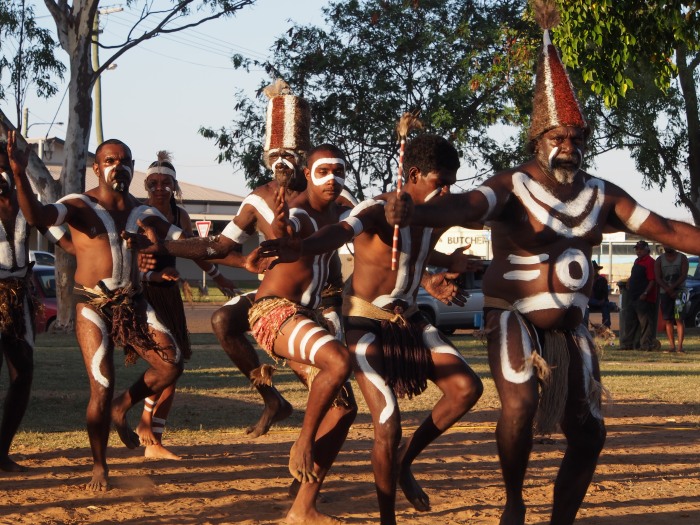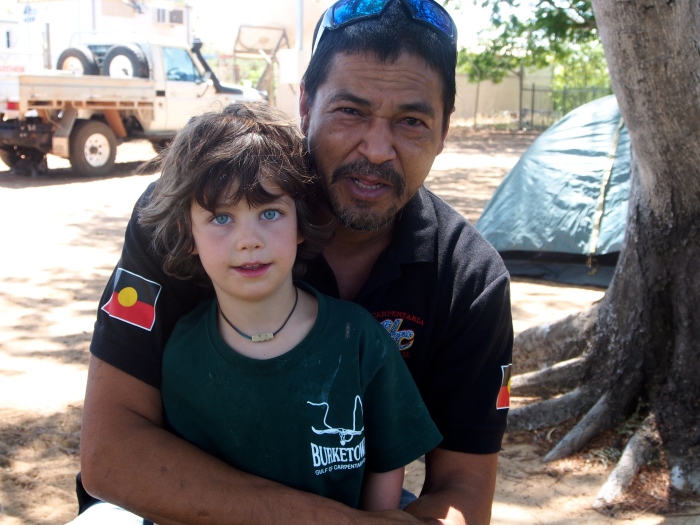The invitation to attend the Carpentaria Land Council’s 30th birthday celebrations in Burketown was the catalyst for this road trip. Revisiting Burketown (where I lived for four years and worked with Indigenous groups on their claims to land) with the kids in tow was bound to be an adventure.
Burketown (Moungibi) is a town like no other, a town which sits between the dusty salt flats which extend north to the coast, and the black soil plains on every other side. In the dry it is dusty and hot and exposed, and in the wet season it is transformed by sheets of water, flooded saltwater rivers and billowing expanses of high grass. For months it is cut off from the rest of the world. The closest regional centre, Mt Isa, is a hard drive of 500kms away.
It is a town with a scarred history, one that has found its way into the toughness which characterises the people of the town today. The areas traditional owners, the Gangalidda, were subjected to violations of all kinds, from displacement to missionaries to massacres. The ‘Gulf plague’ wiped out most of the inhabitants in the 1860’s, followed closely by two cyclones in succession.
Burketown is a town where spectacular conflicts and clashes are part of daily life, a town where the constancy of the battles fought has given rise to generations of warriors.
In spite, or maybe because of all this, Burketown today is a thriving remote community – whilst it also serves a centre for the area’s cattle stations, barramundi tourism, and Shire municipal facilities, it is as HQ for the regions Indigenous politics that it is most notable. Led by high-profile activist (my old boss) Murrandoo Yanner, who is widely referred to as an ‘Indigenous firebrand’, the Land Council has spearheaded major achievements in Indigenous rights on a local and national scale.
For the kids, visiting Burketown offered an oversupply of new experiences, from meeting Murrandoo and other old friends, to watching the saddle bronc and bull ride at the night rodeo. They danced the night away at the concert alongside ringers and locals, and hung out with the Gangalidda Rangers as they prepared dugong, bush turkey (plains bustard), and turtle for a bush tucker feast. They spotted 5 metre saltwater crocs along the Albert River from a friend’s boat and had their first taste of local barramundi. The watched the dancers from Mornington Island perform traditional dances telling the Dreamtime stories of the land and its creatures, and, on our last morning at sunrise, they saw the incredible rolling wave-like cloud formation known as the ‘morning glory’ – a rare meteorological meeting of air currents and pressure systems and one of a few places in the world this formation can be seen.
For me, the return visit wasn’t long enough to spend much quality time with old friends. Yet everyone I had known, from fishermen to station folk to Indigenous families I had worked with closely, seemed so very glad that I had made the effort to come back and even happier to meet the children.
Burketown has certainly made a big impression on the kids; another meaningful connection established to place and people during this epic trip.






